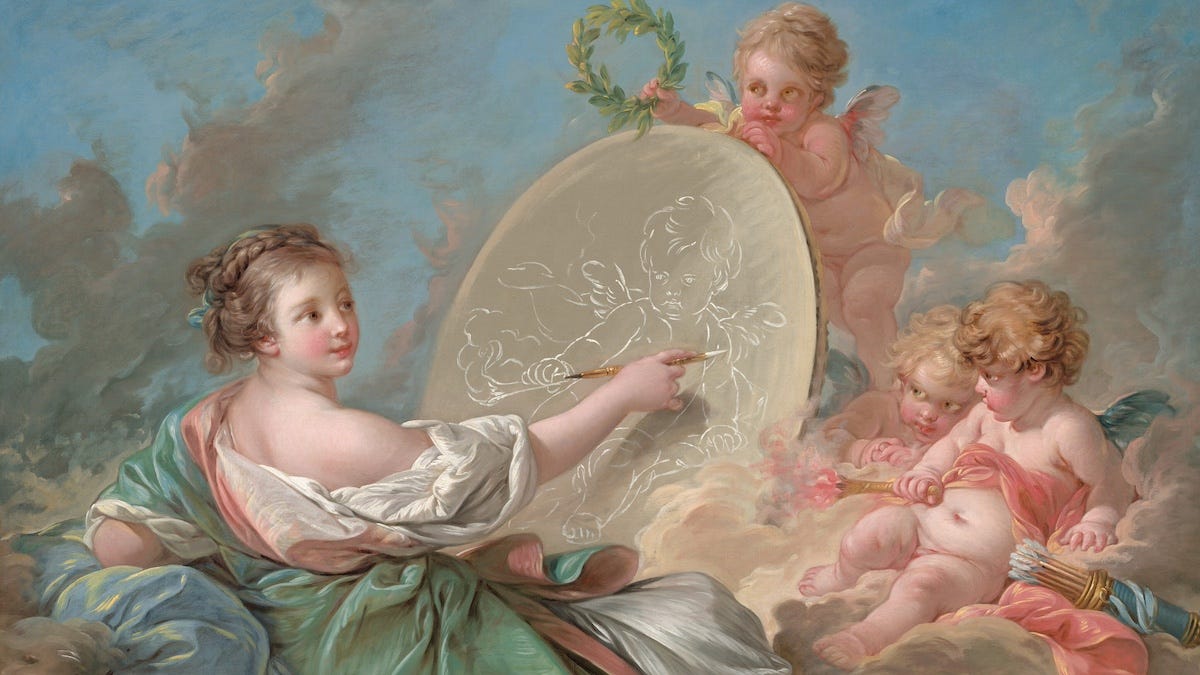My latest for Fairer Disputations, on the strange world of tulpamancy. It’s a long read (so make a cup of tea!). Here’s a brief excerpt:
I stumbled upon tulpamancy after years of studying some of the weirder corners of the Internet: places where bizarre self-diagnoses, fragile identities, and dangerous desires bring perfect strangers into community with one another. I’ve come to see these spaces as carefully sealed chambers for the management of belief and doubt, and many of the dynamics I’ve noticed there reappear in the world of tulpamancy.
There’s the same hesitation to draw any lines, to exclude any experiences from consideration and validation. “Has a host been pregnant with a tulpa?” one user asks. No one quite wants to rule the possibility out. “I would believe it would be possible, but not physically—the whole experience would be imagined, as tulpas are nonphysical entities,” someone offers. That is to say, it would be imagined and real at the same time. “Biologically, that is extremely improbable bordering on impossible.”
There’s the thrill of disembodiment that haunts every online space, the perfect embrace between idea and medium. Online, tulpamancer and tulpa can be equally real, equally present. Another way to say this is that, online, tulpamancer and tulpa can be equally unreal.
Users frequently open their posts and comments with attributions, like the stage directions for a play. [Enter Charmander, stage left.] ‘Tulpas’ and ‘hosts’ take turns speaking. They defend one another, heap praise, and prop each other up. They seek the kinds of recognition they will never find offline, where no one understands.
Only the community understands, a community many refer to as their only source of companionship—apart from, of course, their tulpas. The basis for this connection is their shared retreat from the real world. It is astonishing how far it is possible to retreat. A life that has flattened out offline becomes ever-more flattened here. School, work, family—whatever there is that is not this—falls away.
As I read along, I find myself wondering: what kind of stories are these? Sometimes I see things that the storytellers wish I wouldn’t. Inconvenient details crowd around the edges of each upbeat narrative: fractured bonds, extreme social isolation, difficult pasts, a certain faith with the world that has been broken. Occasionally, stragglers wash up on the shores of this strange island: confused parents or discarded partners who wonder what they did wrong, why imagination won out over reality.
“[D]oes a tulpa make a good friend?” one woman asks. “I have intense social anxiety and I have a hard time making friends. Would creating a tulpa help with this? My husband has told me many times that I need to find someone to talk to besides him for everything.”
There’s something indecent about seeing these private refuges laid so bare, like seeping wounds left uncovered. Some part of me wants to say: keep it to yourself, for your own good. Even if—especially if—what happens in these fantasy worlds sustains you, you should never let anyone see these things. These Wonderlands are at once precious and obscene.





Ha ha, I thought that a "Greysexual" would be someone like me ----- too old to be arsed any more. Not so, apparently.
Fascinating! Bookmarking this to read later.
In the meantime- I’m reading a book about Shinto (The Essence of Shinto: Japan’s Spiritual Heart) published 8 years ago, and so far the author Motohiso Yamakage seems to have been very wise about the human need for spiritualism in the global age. Here’s some chunks that felt very on point for those interested:
“As the social and environmental costs of materialism become more apparent, people are inclined once again to ask deeper questions. They have recently started feeling a strong desire for pursuing meaning, values, and ethics. This is clearly manifested in the recent booming interest in mysticism known as the New Age movement and the events created by the new occult religions. There is a serious danger that, in a climate of spiritual ignorance, such movements can assume a distorted or perverse form.”
“At the same time, established religious organizations are losing their spiritual influence and ability to respond to widespread spiritual hunger. It is because they tend merely to reflect modernity rather than engage critically with the modern world. The more abstract and "intellectual" they become, the more they become materialistic and worldly, and so lose their spiritual dimension. Therefore, with few choices left, people are readily led into the dangerous occult world. Many of the new occult religious groups cynically distort the inner teachings of the traditional religions. They give, or more often sell, instant spiritual teachings to anyone who requests them, whether or not they are truly open to or ready for spiritual advancement. This can have harmful and destabilizing effects on the individuals concerned and even on the teachings themselves.”
“We can say that the great influx of atheism and materialism into Japan had a serious influence on the Japanese mind, where the notion of Kami and spirit-soul (reikon) are increasingly disappearing. Human beings are seen as simply material things, and there is no concept of an afterlife or a sense of continuity in the dominant culture of modern Japan. This view of the world has steadily undermined rather than enhanced the humanist conceptions of freedom, responsibility, and dignity. When human beings become conscious of an afterlife, of a higher being or beings, or of the possibility of rebirth, they are more likely to think beyond their immediate material interests. But when assuming everything is finished with death, people might conclude that they can do anything as long as they are not violating man-made laws or as long as they are managing to escape punishment. Then their absolute goals are satisfying their short-term desires and the prolongation of life at all costs. Ultimately, such questions as "what does it really mean to be human?" or "what values should human beings pursue?" begin to disappear.”